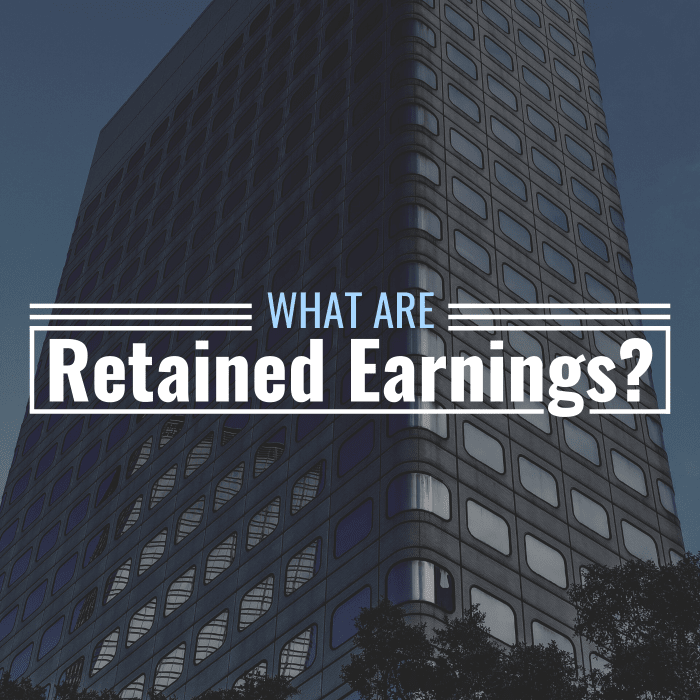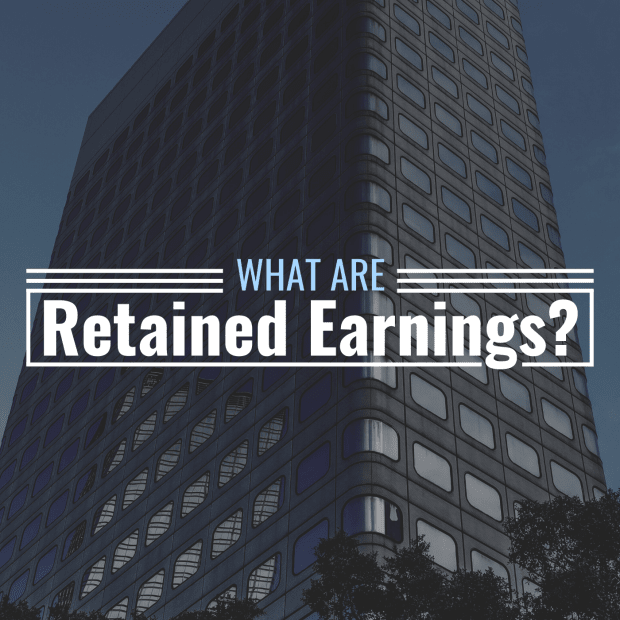https://www.thestreet.com/dictionary/r/retained-earnings
Retained earnings are the cumulative profits that a business holds onto for operations after any dividends have been paid.

Retained earnings refer to any profits a business keeps for operations after issuing dividends to shareholders.
What Are Retained Earnings in Simple Terms?
“Retained earnings” refers to the portion of a company’s net income that isn’t distributed to shareholders as dividends. Earnings that are retained instead of distributed to shareholders may be used for growth and expansion activities like research and development, the purchase of new plants or equipment, or hiring.
This metric is cumulative, so it includes any past retained earnings and can be recalculated any time additional earnings are retained by a company. If a company loses money rather than making money over a given period (i.e., their net income is negative), this detracts from any retained earnings the company had.
How Do You Calculate Retained Earnings?
To calculate retained earnings, add any new earnings to the existing retained earnings figure, then subtract any dividends paid out of these earnings.
Retained Earnings Formula
RE = Base RE + Net Income – Dividends Paid
How Should Investors Interpret Retained Earnings?
What proportion of net income is retained vs. distributed as dividends varies considerably between companies based on industry, company age, and company goals. More mature companies whose growth has slowed often pay higher dividends or pay dividends more regularly than younger companies that are expanding in an effort to secure market share.
Dividend investors—those seeking regular passive income payments—might prefer to invest in companies that tend to retain a smaller portion of their earnings and pay regular dividends. Growth investors—those looking to grow their principal by as much as possible—might prefer to invest in companies that tend to retain most or all of their earnings to reinvest in company growth.
TheStreet Dictionary Terms
Retained earnings add to shareholder equity (how much each share of a stock is worth in real terms—not market value), which can, in turn, drive stock price up. For this reason, high retained earnings are typically a good sign to investors, especially those who didn’t buy in specifically for dividend payments.
How Do Companies Decide How Much Profit to Retain and How Much to Pay Out as Dividends?
This depends on a company’s age and objectives. Typically, younger companies reinvest most or all of their profits into growth, while older, more mature companies that have been turning a consistent profit for years are more likely to parse out some of their earnings to shareholders as dividends. Certain sectors and industries are more likely to pay dividends than others, and some sectors are particularly prized by dividend investors for their high average dividend yields.
Retained Earnings Example: Apple (Nasdaq: AAPL)
| Year | Retained Earnings |
|---|---|
|
2017 |
$98.33B |
|
2018 |
$70.40B |
|
2019 |
$45.90B |
|
2020 |
$14.97B |
|
2021 |
$5.56B |
Frequently Asked Questions (FAQ)
Below are answers to some of the most common questions investors have about retained earnings that were not addressed in the sections above.
Can a Company Have Negative Retained Earnings?
If a company’s losses over a certain period exceed the balance in its retained earnings account, the balance can go negative, which can indicate financial trouble in more mature businesses. Negative retained earnings are not uncommon for startups and newer businesses in growth phases.
Are Retained Earnings an Asset or a Type of Equity?
Retained earnings are not listed as an asset, although they are commonly used to purchase assets like equipment or supplies. Retained earnings are a type of equity listed in the shareholders’ equity section of a company’s financial statements.
Are Retained Earnings Reserves?
Reserves and retained earnings may sound similar, but they are typically two different accounts. While retained earnings represent the cumulative profits a company has earned and has yet to spend or pay out as dividends, reserves are earnings that are moved into one or more specific accounts and designated for specific future purposes like unexpected expenses. In other words, reserves can be considered a subcategory of retained earnings.
Where Can Retained Earnings Be Found on a Balance Sheet?
Retained earnings can be found in the shareholders’ equity section of a company’s balance sheet. This figure may be recalculated and reported quarterly and must be recalculated and reported annually.


















